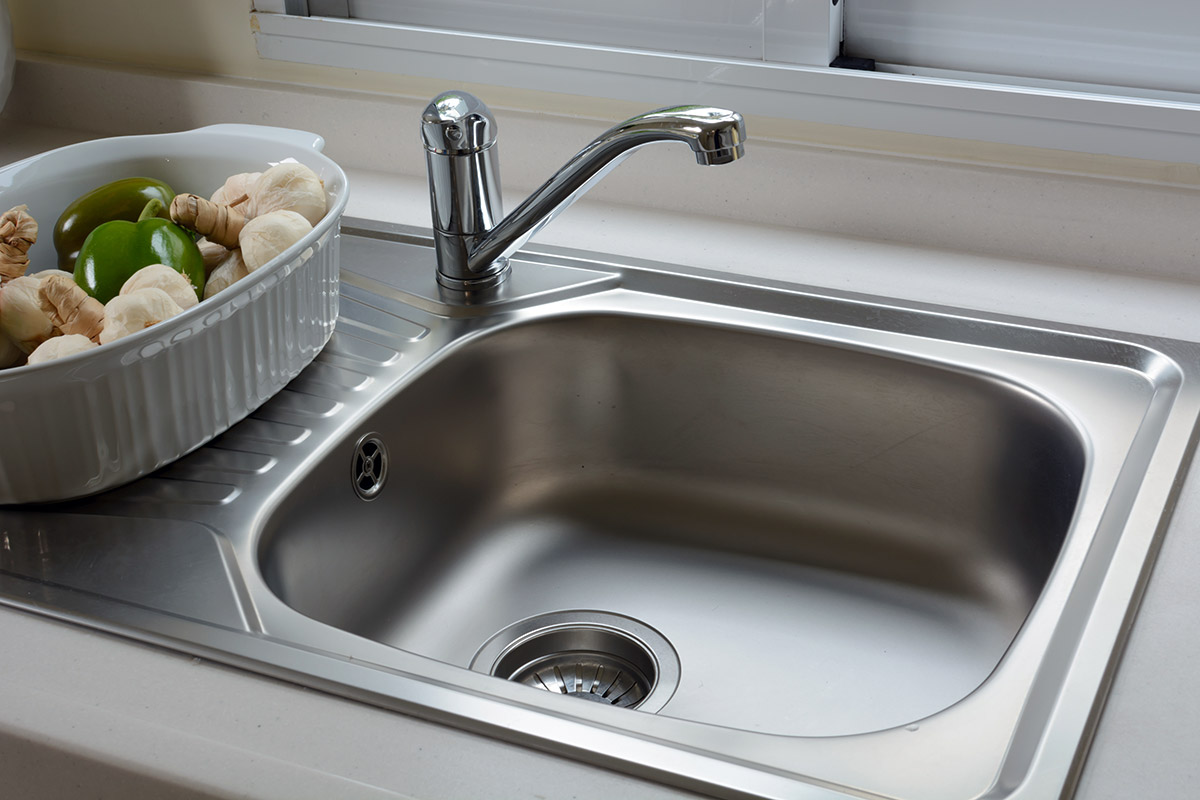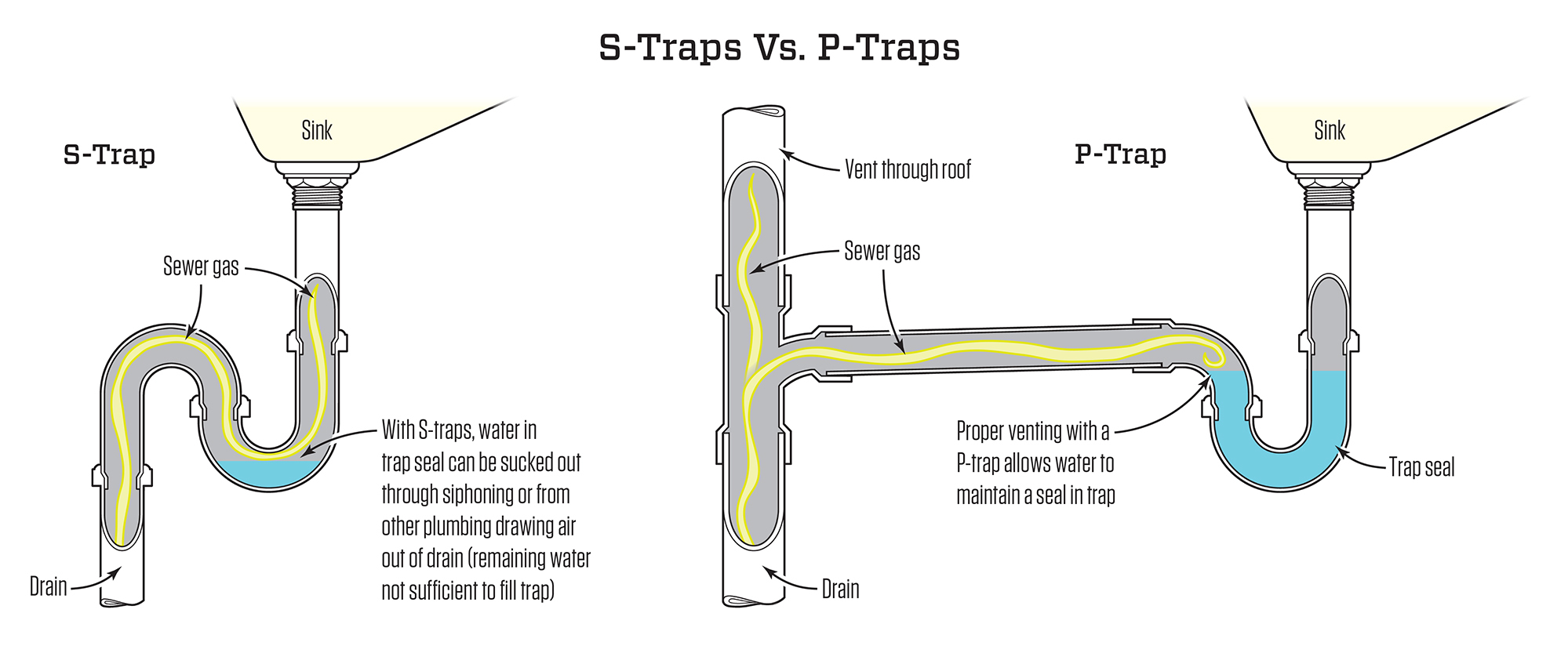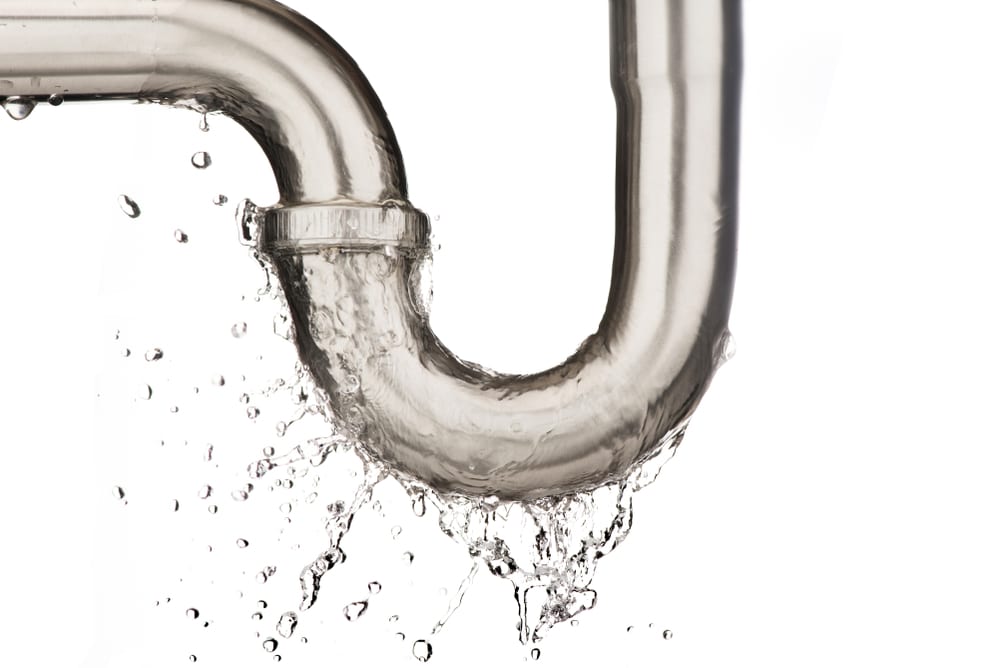If you've noticed that the water in your bathroom sink is not draining properly, the first thing you should check is whether the drain is clogged. A clogged drain is the most common cause of slow or blocked sink drains. This can happen due to a buildup of hair, soap scum, or other debris in the drain. To fix this issue, you can try using a plunger, a drain snake, or a mix of baking soda and vinegar. 1. Clogged Drain: The Most Common Cause of Bathroom Sink Water Not Draining
If the water in your bathroom sink is not draining at all, it is most likely due to a complete blockage in the drain. This can be caused by a large buildup of debris or a foreign object stuck in the drain. In this case, using a plunger may not be effective. Instead, you can try using a drain snake to remove the blockage or call a professional plumber for assistance. 2. Blocked Sink: What to Do When Water is Not Draining at All
Another common issue with bathroom sinks is slow draining water. This can be caused by a partial blockage in the drain or a clog in the P-trap, which is the curved pipe under the sink. Using a plunger or a drain snake can help remove the blockage and improve the draining speed. Regularly cleaning the P-trap can also prevent slow draining issues. 3. Slow Draining: How to Deal with Water That Drains Too Slowly
If you notice that water is not draining at all and instead collecting in your sink, it could be due to a clog in the P-trap or a malfunctioning drain stopper. The drain stopper is the mechanism that allows you to plug and unplug the sink. If it is not working properly, it can prevent water from draining. You can try cleaning or adjusting the stopper to see if that resolves the issue. 4. Standing Water: Why Water is Not Draining and Collecting in Your Sink
A plunger is a useful tool for unclogging bathroom sink drains. To use it, place the plunger over the drain and push down and then pull up to create suction. Repeat this motion a few times to dislodge the clog. If this method doesn't work, you may need to try using a drain snake or call a plumber for help. 5. Using a Plunger: A Simple Solution for Clogged Bathroom Sink Drains
If a plunger is not effective in unclogging your bathroom sink drain, a drain snake can be a more effective option. This tool has a long, flexible wire with a small auger on the end that can reach deep into the drain and break up or remove stubborn blockages. It is important to use the drain snake carefully to avoid damaging the pipes. 6. Drain Snake: A More Effective Way to Remove Stubborn Blockages
Baking soda and vinegar are common household items that can be used to unclog bathroom sink drains. To use this method, start by pouring a pot of boiling water down the drain to loosen any debris. Then, pour half a cup of baking soda and half a cup of vinegar down the drain. Let it sit for 10-15 minutes before flushing with hot water. This can help dissolve any buildup in the drain. 7. DIY Solution: Using Baking Soda and Vinegar to Unclog a Bathroom Sink Drain
Vinegar is not only useful for unclogging drains, but it can also help remove mineral deposits and unpleasant odors from your bathroom sink. To use vinegar for this purpose, mix equal parts vinegar and water and pour it down the drain. Let it sit for a few hours before flushing with hot water. This can help keep your drain clean and fresh-smelling. 8. Vinegar: A Natural Solution for Removing Mineral Deposits and Odors
Hair is one of the most common culprits for clogged bathroom sink drains. To prevent hair buildup, it is important to regularly clean the sink stopper and use a drain catcher to catch any loose hair. If there is already a hair clog in your drain, you can try using a drain snake or a mix of baking soda and vinegar to remove it. 9. Hair Clog: How to Prevent and Remove Hair Buildup in Bathroom Sink Drains
The P-trap, or U-shaped pipe under your sink, is designed to trap debris and prevent it from clogging the main drain pipe. However, this trap can also become clogged itself, leading to slow or blocked drainage. To prevent this, regularly clean the P-trap and remove any buildup. If you notice a clog, you can use a plunger or a drain snake to try and remove it. 10. P-Trap: The Curved Pipe Under Your Sink that Can Cause Drainage Issues
Why Water Will Not Drain From Your Bathroom Sink

Possible Causes
 If you have ever experienced the frustration of a slowly draining bathroom sink, you are not alone. This common plumbing issue is not only inconvenient, but it can also lead to more serious problems if left untreated. There are several possible causes for why water will not drain from your bathroom sink.
Clogged Drain
The most common reason for a slow or non-draining sink is a clogged drain. Hair, soap scum, and other debris can build up over time, blocking the flow of water through the pipes. This can happen in both the sink drain and the
overflow drain
, which is located near the top of the sink bowl.
Blocked Vent
Another possible cause is a blocked vent. Every plumbing fixture in your home is connected to a vent pipe that allows air to escape and helps with proper drainage. If this vent pipe becomes blocked, it can create a vacuum effect that prevents water from draining properly.
Improper Slope
A poorly installed sink or drain pipe can also be the culprit. If the pipes are not angled correctly, water will not flow properly and can become trapped in the pipes, causing a slow drain or backup. This is especially common in older homes where pipes may have shifted over time.
If you have ever experienced the frustration of a slowly draining bathroom sink, you are not alone. This common plumbing issue is not only inconvenient, but it can also lead to more serious problems if left untreated. There are several possible causes for why water will not drain from your bathroom sink.
Clogged Drain
The most common reason for a slow or non-draining sink is a clogged drain. Hair, soap scum, and other debris can build up over time, blocking the flow of water through the pipes. This can happen in both the sink drain and the
overflow drain
, which is located near the top of the sink bowl.
Blocked Vent
Another possible cause is a blocked vent. Every plumbing fixture in your home is connected to a vent pipe that allows air to escape and helps with proper drainage. If this vent pipe becomes blocked, it can create a vacuum effect that prevents water from draining properly.
Improper Slope
A poorly installed sink or drain pipe can also be the culprit. If the pipes are not angled correctly, water will not flow properly and can become trapped in the pipes, causing a slow drain or backup. This is especially common in older homes where pipes may have shifted over time.
Solution
 Fortunately, there are several solutions to this common problem. For a clogged drain, you can try using a plunger or drain snake to remove the blockage. For a blocked vent, you may need to call a professional plumber to clear the vent pipe. If the problem is due to improper slope, it may require repositioning or replacing the pipes.
Preventative Measures
To prevent this issue from occurring in the future, it is important to take preventative measures.
Clean your sink regularly
, using a mixture of baking soda and vinegar to clear any buildup. You can also install a mesh drain cover to catch hair and other debris from going down the drain. Additionally, make sure to use a hair catcher in the shower to prevent hair from clogging the drain.
Conclusion
A slow or non-draining bathroom sink may seem like a minor inconvenience, but it can lead to bigger problems if not addressed. By understanding the possible causes and taking preventative measures, you can keep your bathroom sink draining efficiently. If the issue persists, do not hesitate to call a professional plumber for assistance.
Fortunately, there are several solutions to this common problem. For a clogged drain, you can try using a plunger or drain snake to remove the blockage. For a blocked vent, you may need to call a professional plumber to clear the vent pipe. If the problem is due to improper slope, it may require repositioning or replacing the pipes.
Preventative Measures
To prevent this issue from occurring in the future, it is important to take preventative measures.
Clean your sink regularly
, using a mixture of baking soda and vinegar to clear any buildup. You can also install a mesh drain cover to catch hair and other debris from going down the drain. Additionally, make sure to use a hair catcher in the shower to prevent hair from clogging the drain.
Conclusion
A slow or non-draining bathroom sink may seem like a minor inconvenience, but it can lead to bigger problems if not addressed. By understanding the possible causes and taking preventative measures, you can keep your bathroom sink draining efficiently. If the issue persists, do not hesitate to call a professional plumber for assistance.



















































/GettyImages-173683465-58f822b83df78ca159d4543a.jpg)
:max_bytes(150000):strip_icc()/toilet-plunger-80708184-5797d8885f9b58461f591260.jpg)



:max_bytes(150000):strip_icc()/toilette-plunger--92314164-873564a34a3441058f00a8d6fc1f0441.jpg)













:max_bytes(150000):strip_icc()/Snake-drain-58f6c5705f9b581d5983614c.jpg)







































/sink-drain-trap-185105402-5797c5f13df78ceb869154b5.jpg)








:max_bytes(150000):strip_icc()/Traditional-lakefront-living-room-58bc72c73df78c353c0905bd.png)


